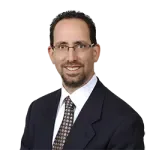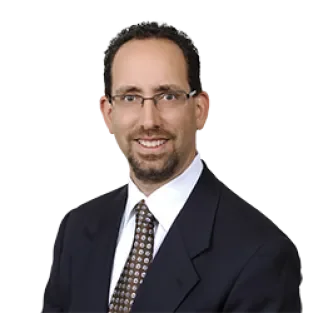ASAP
The L.A. Story of Supplemental Paid Sick Leave
Things have been pretty chaotic and confusing for employers and employees during the COVID-19 public health emergency. Unfortunately, in an effort to help, the City of Los Angeles has unintentionally increased both. This is the story of how mandatory supplemental paid sick leave (SPSL) came to exist in Los Angeles.
Chronology of Implementation of Supplemental Paid Sick Leave
On March 27, the city council adopted an SPSL ordinance extending emergency paid sick leave to all employees working for companies with more than 500 employees nationally. The mayor had until April 7 to sign, not sign, or veto the measure. On April 7, he signed the ordinance and sent it to the city clerk (time of signature and submission unknown). That same day at 9:15 p.m., however, he issued an emergency SPSL order that says: "during the emergency period, that Article 5-72HH of Chapter XX of the Los Angeles Municipal Code [i.e., the ordinance he signed and sent to the city clerk] be suspended during this local emergency period and replaced and superseded with the following provisions [of the mayor's order]" which significantly limits the city council ordinance, and posted the order (and others) to a subpage on his website for emergency orders. The mayor did not issue a press release, tweet about the order, or post the order to "the gram." The mayor then urged the city council to adopt his order as an amended ordinance.
The next day, April 8, the city clerk updated the webpage for the city council-approved and mayor-signed SPSL ordinance to indicate the ordinance would take effect April 10. This webpage does not reference or include the mayor's April 7 emergency SPSL order that says the SPSL ordinance will not be in effect.
Law's Start and End Dates
Employers with L.A. operations, though not happy with what they thought would be two days of lead time to prepare for SPSL, have even less time to prepare because the mayor's order took effect immediately, at 9:15 p.m. Wednesday, April 7, unlike, for example, a separate order he signed a few hours earlier – the worker protection order – that will take effect on 12:01 a.m. on Friday, April 10. Given both orders the mayor signed took effect immediately, it is not clear why the mayor took different actions regarding these two orders.
The first difference between the emergency order and the ordinance concerns the end dates. The city council-passed ordinance had an expiration date of December 31, 2020 (unless it extended the ordinance). However, the mayor's order is open-ended, lasting until two calendar weeks after the COVID-19 local emergency ends (date unknown).
Covered Employers & Employees
One of the most significant differences between the ordinance and the mayor’s order concerns which employers are covered. The city council-passed ordinance applied broadly to all private employers with 500 or more employees nationally. However, the mayor's order applies to private employers with either 500 or more employees in Los Angeles or 2,000 or more employees in the United States. This leaves out employers with between 500 and 2,000 total employees, unless they have 500 employees working within the City of Los Angeles. This also raises questions regarding exactly how to count total employees, and those working in Los Angeles.
Similarly, the mayor’s order reduces the number of employees who may be eligible for supplemental paid sick leave. The city council-passed ordinance narrowly provided two exemptions for employers of an employee who was either a first responder or a health care provider. However, the mayor's order potentially exempts many more employees, i.e., employers of the following types of employees and/or under the following circumstances, including businesses that have closed as a result of the pandemic:
- Emergency Personnel: Individuals specified in the April 1, 2020 Los Angeles Safer Home emergency order, for example, first responders, emergency management personnel, a related contractor and others who work for emergency services providers.
- Health Care Worker: This broadly covers individuals described in the state's mini-FMLA law (California Family Rights Act), such as physicians and others the U.S. Labor Department says are capable of providing health care services under the FMLA, as well as individuals, including contract workers, working at a licensed health facility, which includes, for example, hospitals, nursing facilities, and hospices.
- Parcel Delivery: Exempt is an employer of an employee that provides global parcel delivery services, which the order considers an essential emergency service vital to the health and safety during this pandemic.
- Generous Existing Benefits: If an employer has a paid leave or paid time off policy that provides a minimum of 160 hours of paid leave annually, it is exempt for the employee that received the more generous paid leave.
- Certain New Businesses: New businesses that started in, or relocated, to L.A. on or after September 4, 2019 through March 4, 2020 (i.e., could not have been in business in L.A. in the 2018 tax year) do not have to comply, though the exemption does not extend to construction businesses or film producers.
- Government Workers: The order does not apply to employees of government agencies working within the course and scope of their public service employment.
- Closed Businesses / Businesses that Already Provided Leave: Any business or organization that was closed or not operating for a period of 14 or more days due to a city official’s emergency order because of the COVID-19 pandemic or provided at least 14 days of leave are exempt.
The mayor's order keeps the same definition of employee: an individual who performs any work in L.A.'s geographic boundaries for an employer if employed with the same employer from February 3, 2020 through March 4, 2020. However, the order changes the standards if employees are unionized. A collective bargaining agreement (CBA) in place on April 7, 2020 may supersede the order if it contains COVID-19-related sick leave provisions. When that CBA expires or is being renegotiated, the parties can expressly waive the order's requirements if the waiver is explicitly set forth in the agreement in clear and unambiguous terms. If a CBA is in place on April 7 but does not address COVID-19-related sick leave provisions, an employer must comply with this order unless and until the agreement is amended to include an express, clear and unambiguous waiver.
Amount & Value of Supplemental Paid Sick Leave
Both the city council-approved ordinance and the mayor’s order provide similar levels of supplemental paid sick leave. In both, different standards apply to "full-" and "part-" time employees. If an employee works at least 40 hours per week or the employer classifies the employee as "full-time," the employee receives 80 hours, which an employer calculates based on the employee’s average two-week pay over the period of February 3, 2020 through March 4, 2020. Employees who work fewer than 40 hours per week and who an employer does not classify as full-time receive an amount no greater than their average two-week pay earned February 3, 2020 through March 4, 2020. Note that, if an employee is jointly employed, the individual is only entitled to the total aggregate amount of leave specified for employees of one employer.
The mayor's order does not detail how to calculate the SPSL pay rate. However, a provision concerning damages for violations references an employee's average rate of pay. Like the city council-approved ordinance, the mayor's order addresses the maximum value of SPSL: in no event shall the amount of SPSL paid exceed $511 per day and $5,110 in the aggregate for each employee.
Both the city council-approved and mayor's order contain an offset provision for employers that voluntarily provided COVID-19 leave; however, under the mayor's order the provision is broader. Employers can offset the amount of SPSL by the amount of paid leave they provided an employee on or after March 4, 2020, for any reason the order identifies or in response to an employee's inability to work due to COVID-19. Note, though, that employers cannot count "previously accrued hours" for offset purposes, although the mayor’s proposed order would exempt employers that provide at least four weeks of paid time off each year. For example, if employers voluntarily allowed employees during this period to use their pre-existing L.A. paid sick leave ordinance hours, employers cannot use these hours to offset their SPSL obligations. The mayor's order makes clear that SPSL is in addition to any leave employers were required to provide employees, e.g., California and/or L.A. paid sick leave, or non-COVID-19 pre-existing employer-provided paid leave benefits.
Covered Uses & Family Members
For the most part, the city council-approved ordinance and mayor's order align, though the latter is broader in one instance and narrower in another. Covered employees can use SPSL if they are unable to work or telework for the following purposes:
- Employee takes time off due to COVID-19 infection or because a public health official or healthcare provider requires or recommends employee isolate or self-quarantine to prevent the spread of COVID-19
- Employee takes time off work because employee
- Is at least 65 years old or has a health condition such as heart disease, asthma, lung disease, diabetes, kidney disease, or weakened immune system
- Needs to care for a family member who is not sick but who public health officials or healthcare providers have required or recommended isolation or self-quarantine
- Needs to provide care for a family member whose senior care provider or whose school or child care provider caring for a child under the age of 18 temporarily ceases operations in response to a public health or other public official’s recommendation. However, this only applies to an employee who is unable to secure a reasonable alternative caregiver.
The order does not define "family member" but does minimally define "child" to be one younger than 18 years old.
Requesting & Documenting Supplemental Paid Sick Leave
Like the city council-approved ordinance, under the mayor's order employers must provide SPSL upon an employee's oral or written request, but the law does not address when employees must provide notice. Additionally, employers cannot require a doctor’s note or other documentation for SPSL use.
Prohibitions, Penalties & Damages
One of the few instances in which the order goes into detail is when it discusses what it prohibits, and remedies for violations. In addition to prohibiting any waiver of the order's requirements (except, we assume, the separately permitted CBA waiver), employers cannot discharge, reduce compensation of, or otherwise discriminate against an employee for opposing any practice the law proscribes for: 1) Requesting to use or using SPSL; 2) Participating in proceedings related to the law; 3) Seeking to enforce rights under the law by any lawful means; or 4) Otherwise asserting rights under the law. The only recourse is a private lawsuit in state court, where, if an individual prevails, the individual can receive reinstatement, back pay and SPSL unlawfully withheld, other legal or equitable relief a court deems appropriate, and reasonable attorneys' fees. Curiously, although the mayor's order designates the Office of Wage Standards (OWS) to interpret the law (something the city council did not do), unlike pre-existing L.A. employment ordinances, OWS does not appear to have the ability to enforce the law or accept administrative complaints.
Next Steps
Because the mayor's order eliminated the two-day grace period the city council provided employers to come into compliance, covered employers should immediately turn their attention to determining whether the law will apply and, if so, developing policies, procedures, and practices to implement the law. Employers should also monitor OWS's website for FAQs or rules.



